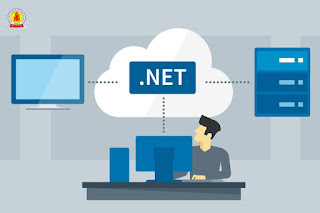Dot NET Framework Development Guide | Arya College
Best tools and technologies for .NET based web application
In the digital world, there are millions of different types of websites. A website is where you can find interactive information about a person, business, or organization. However, to make a website function in a specific way, students of Engineering Colleges need a web application solution. When it comes to web application development, there are many different types of solutions to choose from. In addition, an individual can filter through the various solutions depending on how they want their application to run and function.
Today, one of the most dynamic web applications used in the business is .NET. Microsoft began the development of the .NET Framework in the late ’90s. However, it is originally under the name of Next Generation Windows Services (NGWS). It is a Microsoft web services strategy to connect information, people, systems and devices through the .NET software. In addition, it makes it really efficient for any user to share and use their information between multiple websites, programs, and computers.
What is the meaning of .NET?
It is also known as .NET Framework. It is a type of software development in the digital development industry. However, it is created by Microsoft and primarily runs on Microsoft Windows. The .NET Framework uses language interoperability, which can use a code written in other languages in a large Framework Class Library (FCL). The FCL provides the user interface, database connectivity, web application development, data access, numeric algorithms, network communications, and cryptography.
Any programs written in .NET use a software environment known in the programming world as CLR (Common Language Runtime). In addition, CLR is a virtual machine that can provide a range of services. It includes the following:
- Security – .NET has its own security mechanism Code Access Security (CAS). It is constructed on evidence that relates to a specific assembly to govern the permissions approved to get to the code.
- Memory Management – CLR takes away the burden of managing memory from the developer. It handles memory management itself by detecting when memory can be safely discharged.
- Performance – The application launch enables the .NET Framework to compile the Common Intermediate Language code into executable code using its “Just-in-time” compiler. However, it stores the executable program into the .NET Native Image Cache.
In order to create dynamic web applications, programmers can create software by uniting their own source code with the .NET Framework and other libraries. However, all new applications create to run on Microsoft Windows should use .NET. With the drastic evolvement of technology, computer systems require interaction between new and old applications. Therefore, the .NET Framework provides access to the functionality implemented in new and old programs that perform outside the .NET environment.


Comments
Post a Comment